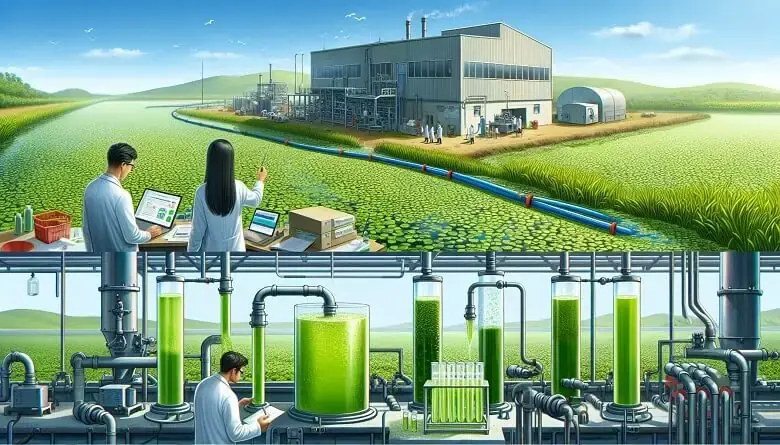Fuels and Plastics from Algae: A Sustainable Future
Estimated reading time: 3 minutes
Recent advancements in biotechnology have shown amazing potential for using algae to produce sustainable fuels and plastics. Scientists have carefully bred and genetically modified a new type of green algae called Chlamydomonas pacifica. They made it thrive in harsh conditions that would normally harm most organisms. This new method tackles environmental issues. It also creates a future where we can make important materials from renewable sources.
Producing fuels and plastics from Chlamydomonas pacifica Algae
The University of California, San Diego isolated this engineered strain from a pond in 2020. Chlamydomonas pacifica can produce oil in wastewater. It can do this even when temperatures are over 40 °C (104 °F). It can also survive in alkaline conditions with a pH over 11. This resilience is fascinating. It makes Chlamydomonas pacifica very viable as a biofactory, which means it can produce useful substances for us. It also helps manage waste effectively by using wastewater as its growth medium.
The implications of this research are profound. We can turn carbon dioxide into useful resources. These resources include sustainable fuels and bioplastics. Sustainable fuels are fuels that do not harm the environment. Bioplastics are a type of plastic made from natural materials. By using these materials, we can greatly decrease our need for fossil fuels. Fossil fuels are energy sources like coal, oil, and natural gas that can harm the environment. This helps reduce climate change. Algae-based biofactories can play a key role in a circular economy. They change waste products into useful materials. This reduces environmental impact and supports sustainability.
Algae for green future
Furthermore, this technology has the potential to create jobs and stimulate economic growth in the green energy sector. As industries try to move towards eco-friendly ways, new ideas like using Chlamydomonas pacifica can help. Chlamydomonas pacifica is a type of algae. It can align with global goals for sustainability. These innovations offer practical solutions.
The research into algae biofactories exemplifies how scientific innovation can lead us towards greener alternatives in everyday life. As we explore these paths, young minds interested in STEM fields need to get involved. STEM stands for Science, Technology, Engineering, and Math. Understanding these concepts and using devices like the portable wastewater sampler inspires future scientists and engineers. It also gives them the knowledge to help create environmental solutions.
For more intriguing insights into other STEM-related topics, visit ENTECH. Explore our digital magazine dedicated to inspiring teenagers and young adults to pursue their passions in science, technology, engineering, and mathematics.






